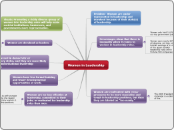von mark hutton Vor 11 Jahren
571
Women in Leadership
Despite earning the majority of advanced degrees, women are significantly underrepresented in leadership roles across various sectors, including Fortune 500 companies and government positions.

von mark hutton Vor 11 Jahren
571

Mehr dazu